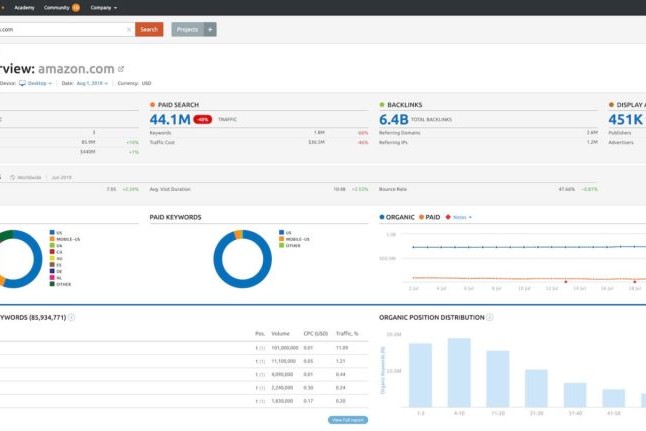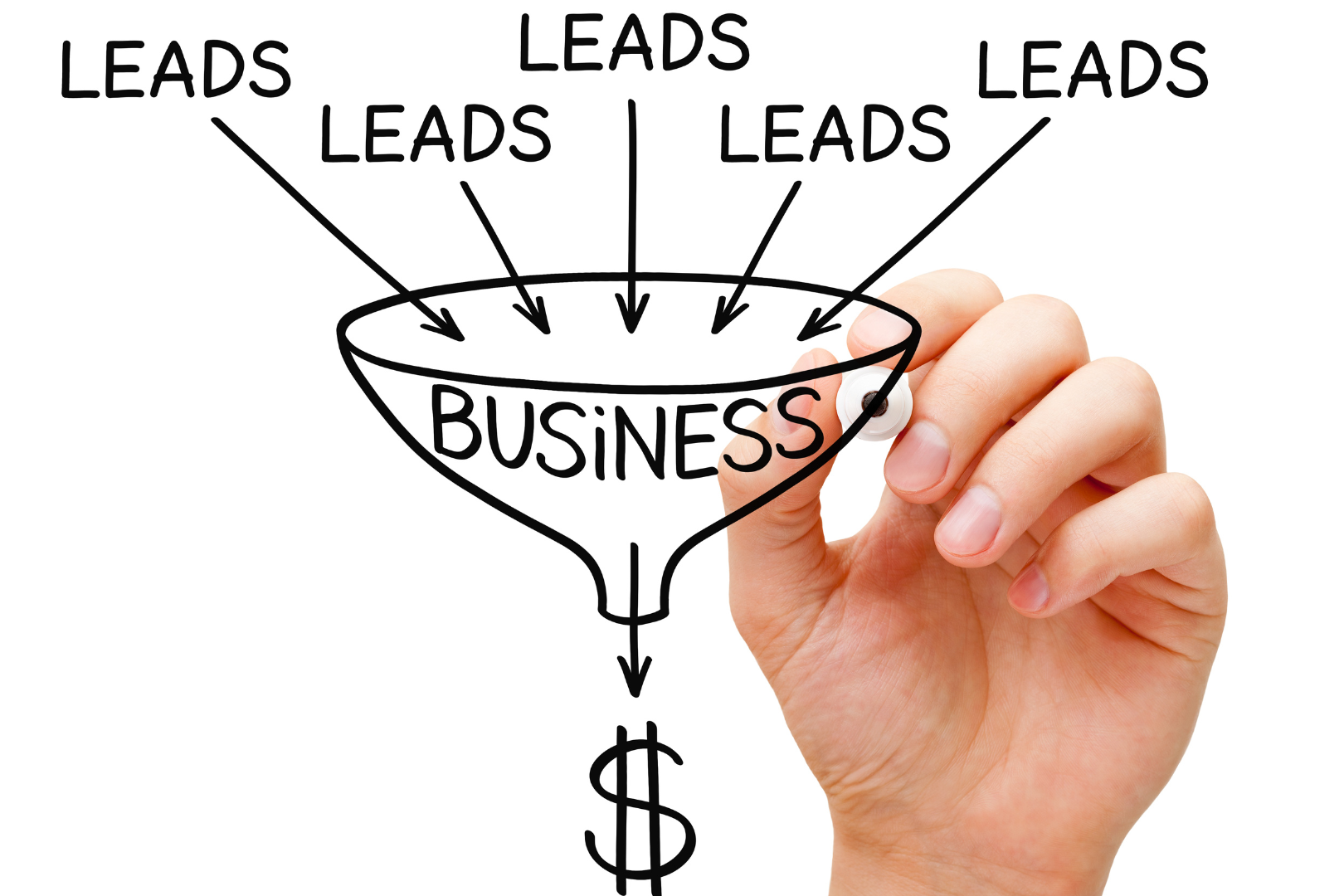Website leads are a lot like yards in a football game. Sadly, having the highest number of yards doesn’t always translate to victory.
Likewise, having a ton of leads doesn’t really do anything for businesses if those leads don’t turn into sales or subscribers.
While continuously acquiring new leads is important, it’s also helpful to organize the leads you do have. One way to focus your resources on the right leads is through a simple marketing lead qualification process.
We’ll walk you through the benefits of lead qualification and outline a simple 5-step solution to get you started.
What Is Lead Qualification?
Lead qualification organizes leads by their likelihood to complete a conversion. In turn, sales and marketing staff can better focus their resources on leads that turn into customers.
There are many stages of lead qualification, with the four most basic being:
- Information qualified lead (IQL): A lead has provided contact information via a form, text, or phone call that a sales member can follow up on.
- Marketing qualified lead (MQL): The lead has met some predetermined criteria, such as being the right age or income bracket, to warrant further follow-up. They will officially be considered active leads in your CRM at this stage.
- Sales accepted lead (SAL): A sales member has evaluated the MQL and determined that they warrant additional attention.
- Sales qualified lead (SQL): A sales member has placed a SAL through a lead scoring framework and determined that the lead is hot.
Lead qualification is a simple but granular process that requires constant assessment to determine how valuable a lead is.
For companies with very few leads, the process may feel tedious. But for a larger company with tens of thousands of leads, it’s an invaluable tool to separate the chaff from the wheat.
Not Every Lead Is Created Equal
It might be tempting to reach out to every lead in your Rolodex, but you could do more harm than good.
For example, pursuing mass leads without qualifying them could lead to:
- Reduced Conversion Rates: Unqualified leads are less likely to convert or complete a sale. Over time, this will significantly decrease your conversion ratio.
- Wasted Resources: Chasing every lead that comes through your CRM will result in lots of hours wasted on outreach to leads who are unlikely to convert. This will also take away time leads that are likely to convert.
- Unclear Analytics: When you don’t qualify leads or understand what type of leads are likely to convert, you are essentially operating in the dark. In turn, it will be difficult to discern what factors lead to conversion and abandonment.
- Frustrated Sales Staff: Sales staff that operate on commission will be frustrated by the constant failure you have set them up for. This could have larger consequences for your organization moving forward.
- Unsatisfied Customers: On the flip side, collecting poor or unqualified customers who are not the right fit for your organization can lead to dissatisfaction.
Lead qualification can quickly fix these inefficiencies in your sales and marketing processes. Plus, thanks to tools like HubSpot and Salesforce, qualifying leads has never been easier.
Below is a 5-step lead qualification process guaranteed to work for any organization.
How to Qualify Leads in 5 Simple Steps
1. Create the Ideal Customer
Use a competitor research tool and analytics to uncover what customer demographics matter most to your business.
Some common demographic factors to consider include:
- Age
- Income level
- Marriage status
- Location
Likewise, you’ll want to research the behavior of your customers. For example, if your business manufactures travel pillows, it pays to know how many times a year your average customer flies or drives long distances.
You can conduct surveys, focus groups, or customer interviews to uncover much of this information.
Likewise, we like to use advertising tools, such as Meta for Business, which collects much of this information for you. Many content evaluation tools also help determine what pieces of content lead to a conversion.
2. Gather As Much Information As Possible
When collecting customer information, it pays to be as thorough as possible. While a basic contact form will yield the most leads, placing qualifiers will help you get the right leads.
For example, we often include questions on forms to ask where a lead works, what position they occupy, and whether they have decision-making ability. If they lack decision-making ability, it’s not as useful for us to pursue them as a lead as it would be their boss.
3. Implement a Lead-Scoring System
Once a lead is in your system, you must set custom criteria to determine if they are qualified.
A lead-scoring system does just that, and several types of lead-scoring frameworks are widely popular. The most common include:
- BANT: Budget, authority, need, and timeline.
- MEDDIC: Metrics, economic buyer, decision criteria, decision process, identifying pain, and champion.
- CHAMP: Challenges, authority, money, and priority
- GPCTBA/C&I: Goals, plans, challenges, timeline, budget, authority, consequences, and impact.
Of course, your sales staff can implement their own custom lead scoring system based on what factors they find most valuable to their company.
4. Use an Automation to Qualify Leads
Automating lead scoring and outreach has never been easier, thanks to the emergence of CRMs like Salesforce, Keap, and HubSpot.
For example, HubSpot provides native automation that automatically moves a lead from one stage to the next anytime they complete an action. This could include downloading an ebook, signing up for your newsletter, or even responding to a call from a sales staff.
Use automation to simplify lead scoring, streamline communication, and clean up your data.
5. Eliminate Silos Between Sales and Marketing Staff
Finally, it is essential to maintain a healthy partnership between your marketing and sales team members.
It’s often the case that sales staff members may see things in the lead process’s final stages that marketers are unaware of during a content evaluation.
Facilitating clear communication and data sharing between these two teams will ensure that marketers are bringing in the most qualified leads to sales members.
Lead qualification is an easy and practical way to improve your sales performance and boost company revenue. Be sure to implement the right process and invest in the right software that feels right for your business.
Takeaways
- Lead qualification helps focus resources on the right leads and cuts down on inefficiencies.
- There are generally four stages of lead qualification: information qualified lead (IQL), marketing qualified lead (MQL), sales accepted lead (SAL), and sales qualified lead (SQL).
- Create an ideal customer portrait and use lead scoring to determine if customers fit that description.
- Make sure to keep communication clear between sales and marketing staff, using automation and software to facilitate this exchange.
FAQs: Marketing Lead Qualification
What role does personalization play in lead qualification?
Personalization helps build trust and increases the likelihood of sales conversion. Creating more personalized questions allows you to qualify and separate leads more easily. It’s also why creating a unique customer experience tends to lead to more sales.
What are the common challenges faced in lead qualification?
- Maintaining clean data
- Maintaining alignment between sales and marketing teams
- Ensuring you’re capturing the right leads
- Ensuring you’re not losing the right leads
- Finding the right lead scoring framework
How can businesses adapt to evolving market trends in lead qualification?
Tools like AI and automation make it easier for businesses to evolve with new trends as they emerge in their given markets. Invest in the right software that can adapt to your changing business needs.



